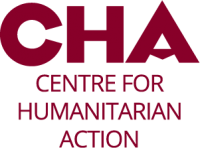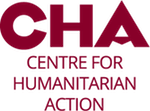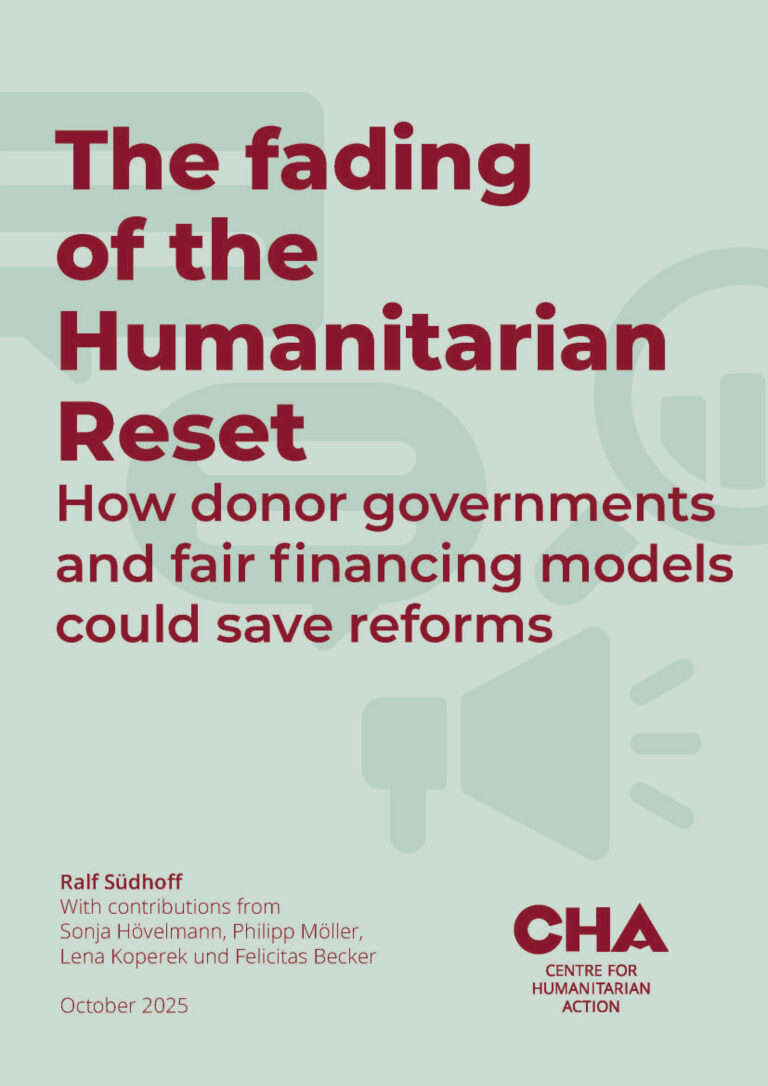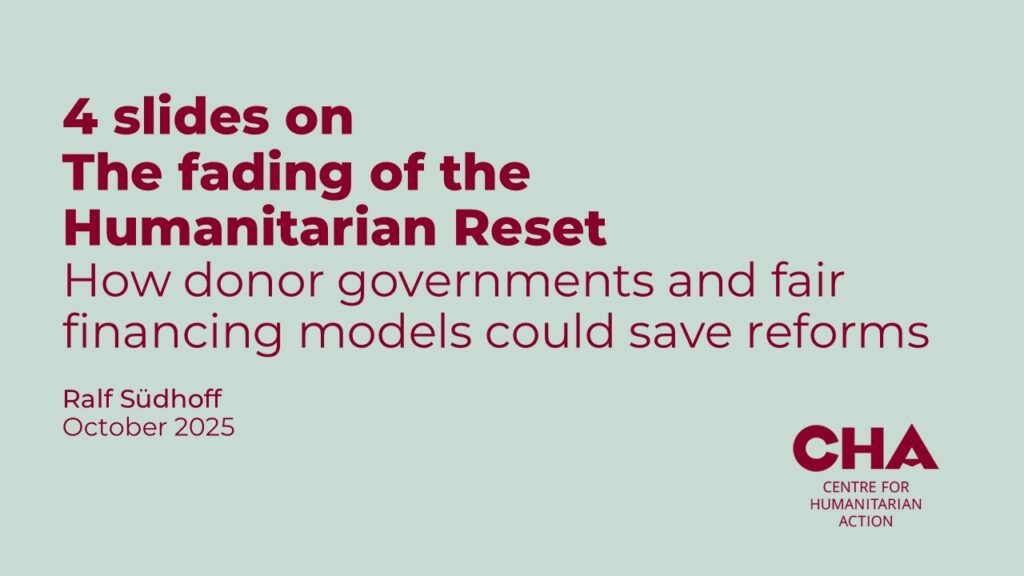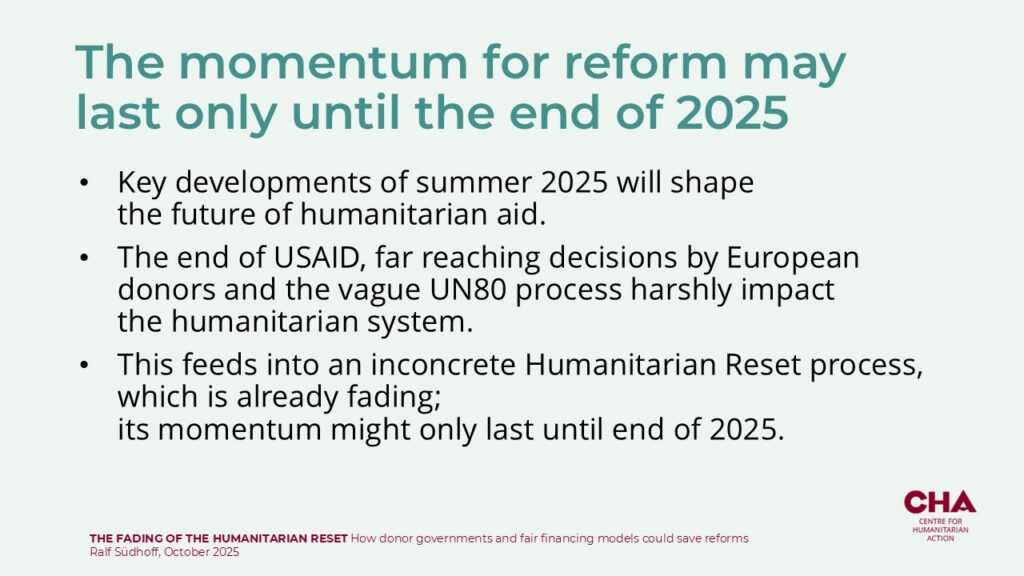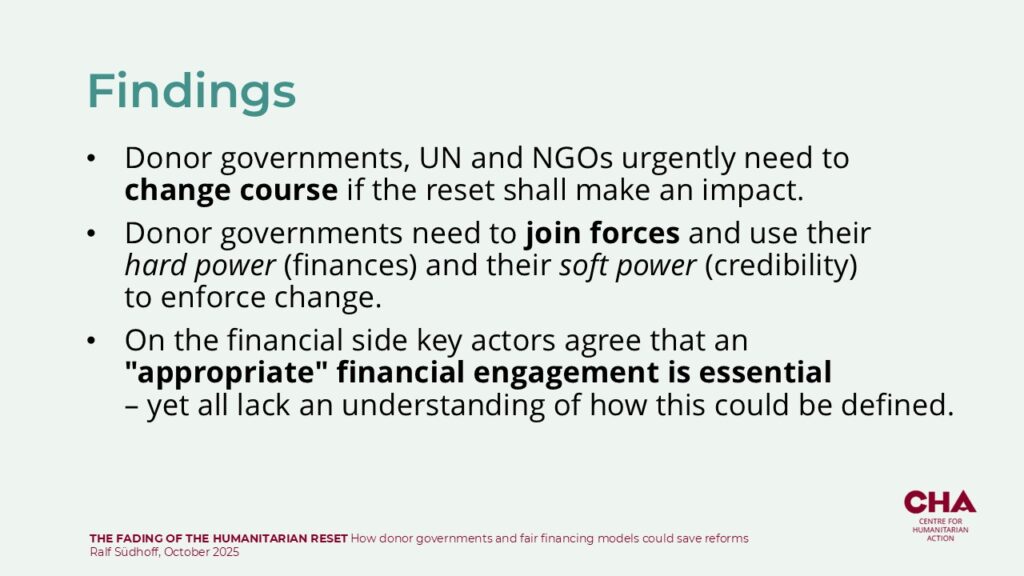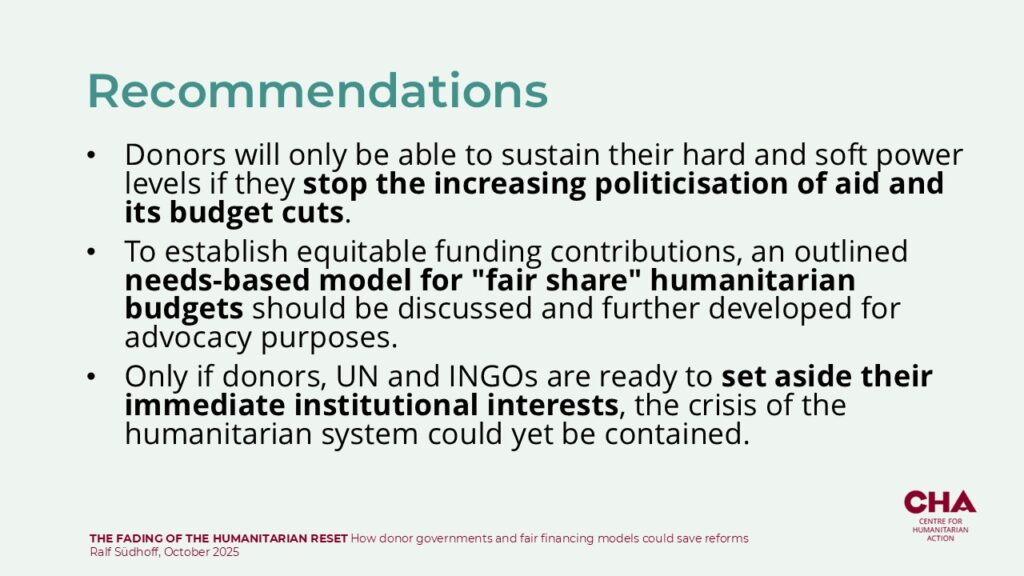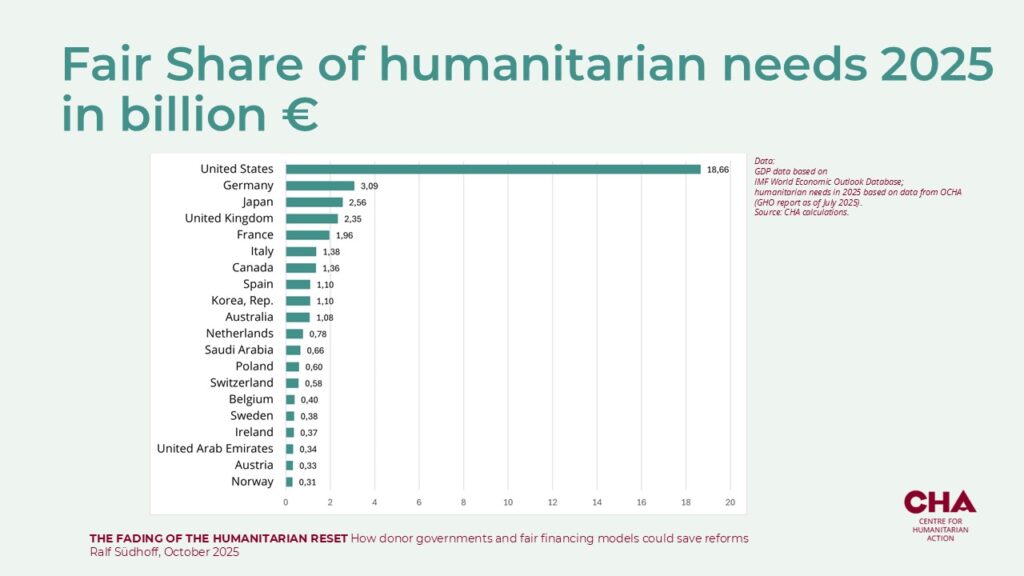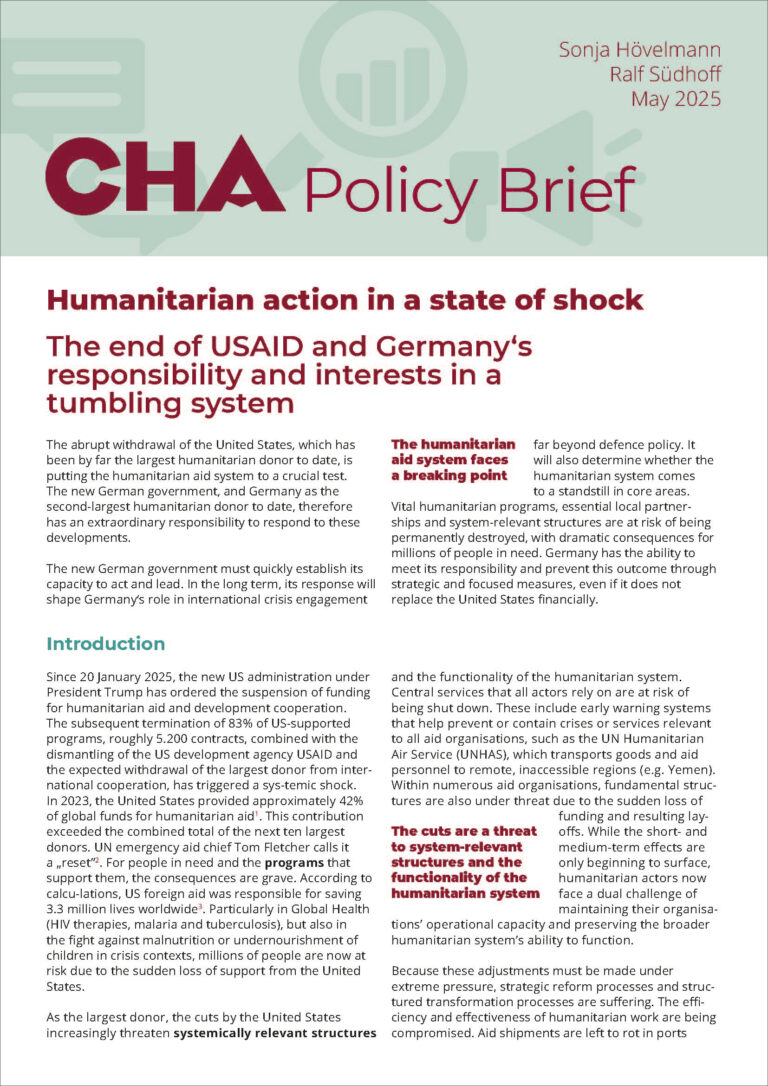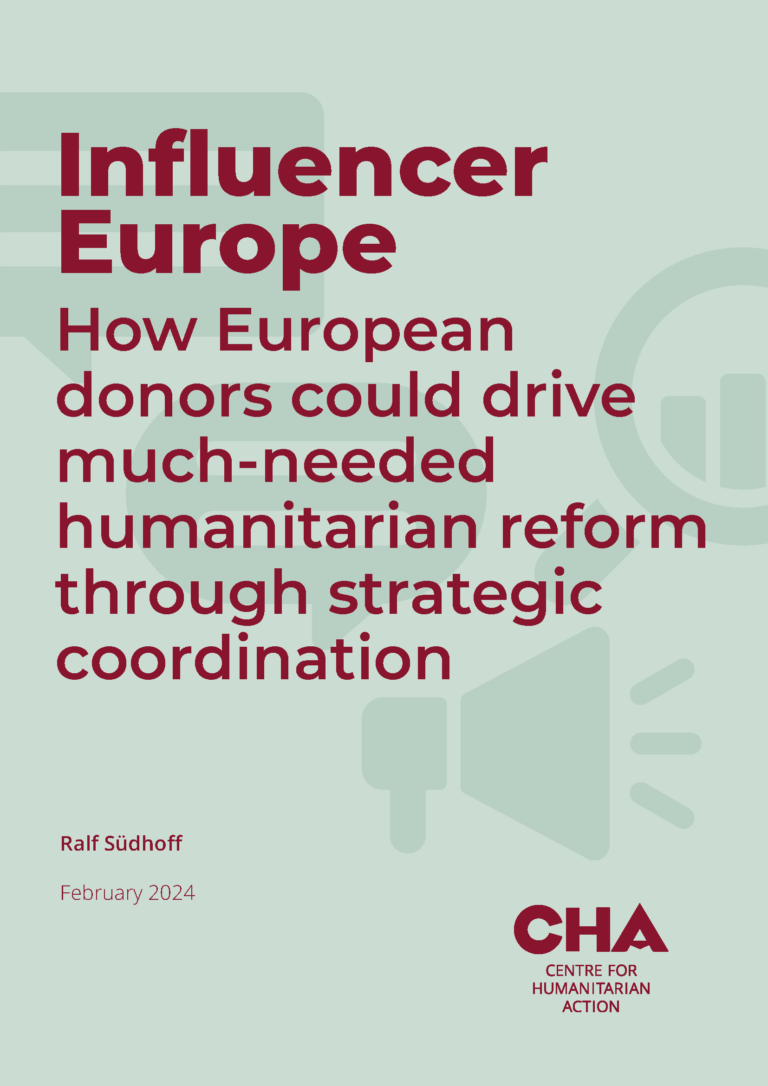| Author: | Ralf Südhoff |
| Date: | 16.10.2025 |
| Downloads: |
Paper (EN)
Paper (DE) Executive Summary (EN) Executive Summary (DE) |
The summer of 2025 could one day be seen as a milestone in the long-standing efforts to reform the humanitarian system. Following the official closure of USAID on 1 July, the world’s largest donor institution to date, the meeting of the Interagency Standing Committee (IASC) in early summer was expected to set the course for the Humanitarian reset – a reform process that must overcome nothing less than a crisis of “legitimacy, morale, and funding“. At the same time, the European Commission and Germany, the largest humanitarian donors after the US to date, made far-reaching decisions about their future humanitarian engagement, while expectations placed on them to shape the humanitarian aid of the future are higher than ever.
Where does the humanitarian community stand a good six months after the announcement that all US aid funding would be stopped? Why is the Humanitarian Reset already threatening to fail? How can the top donor governments still prevent this by leveraging their hard power, especially financing, and their soft power? And how does this relate to the lack of targets for how humanitarian budgets should be allocated according to fair and transparent criteria?
Numerous donor countries have promised to continue financing humanitarian aid at an appropriate or, in the words of the new German federal government, “adequate” level. At the same time, an unprecedented process of cuts to humanitarian budgets is underway not only in the USA, but also in Europe. The question of what constitutes an
appropriate budget for a given donor government and how this can be defined transparently therefore appears central.
However, so far, none of the actors involved has provided a transparent or consistent answer. Unlike in the defence or development sectors, for example, there are until today no internationally agreed financial targets or for a start a substantial debate about it. In an era of Contested Aid and rapidly shifting narratives an answer seems urgently needed. Agreements among like-minded donor governments on criteria- based targets for their humanitarian budgets would be an important building block for a successful Reset process and for stabilising global humanitarian budgets.
CHA Director Ralf Südhoff analyses the progress and obstacles to reform, presents a fair share model for international humanitarian budgets, and argues why donors, the UN and NGOs must change course quickly in order to take advantage of the new momentum for humanitarian reform and prevent an even more profound crisis in humanitarian aid.
Take Aways
(Mouseover to pause)
